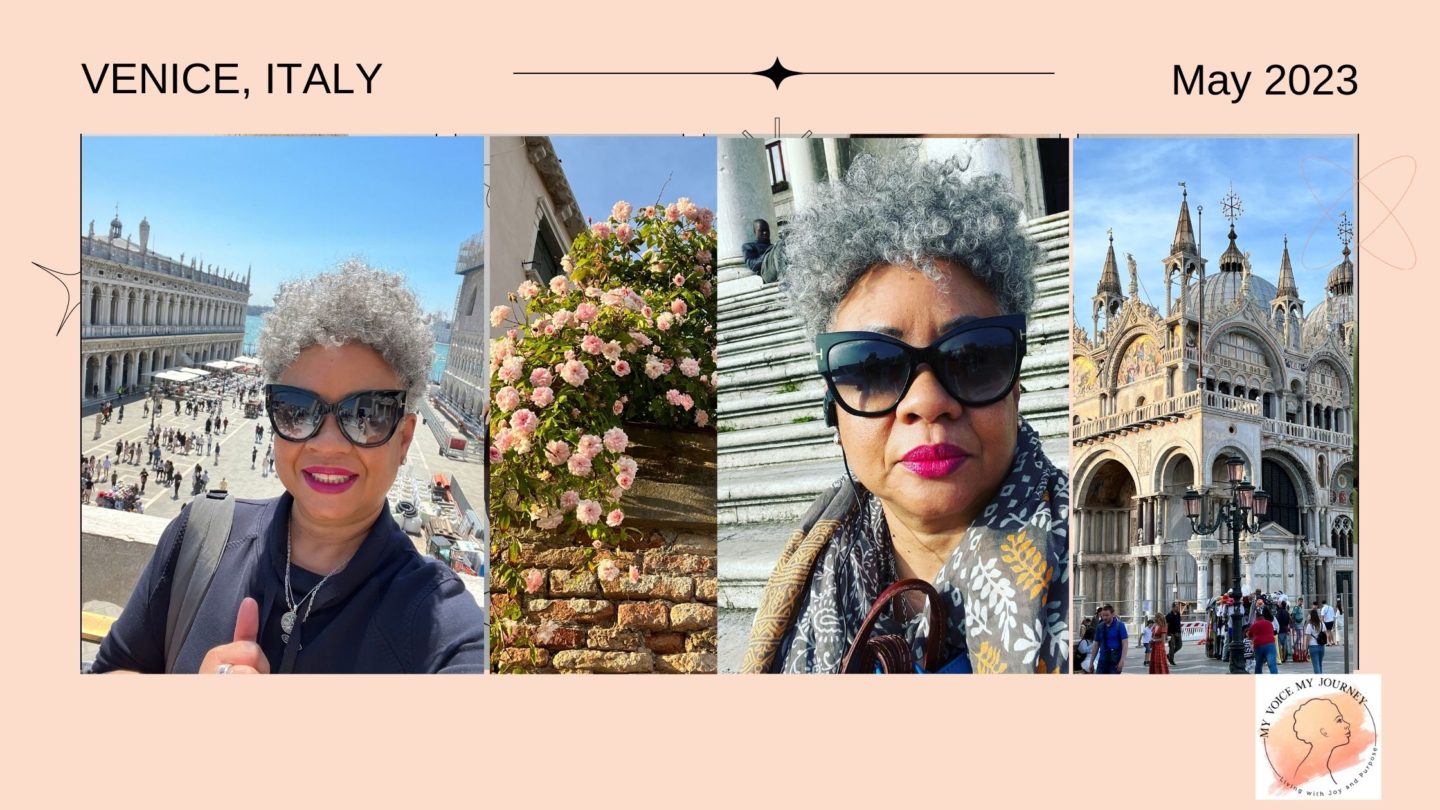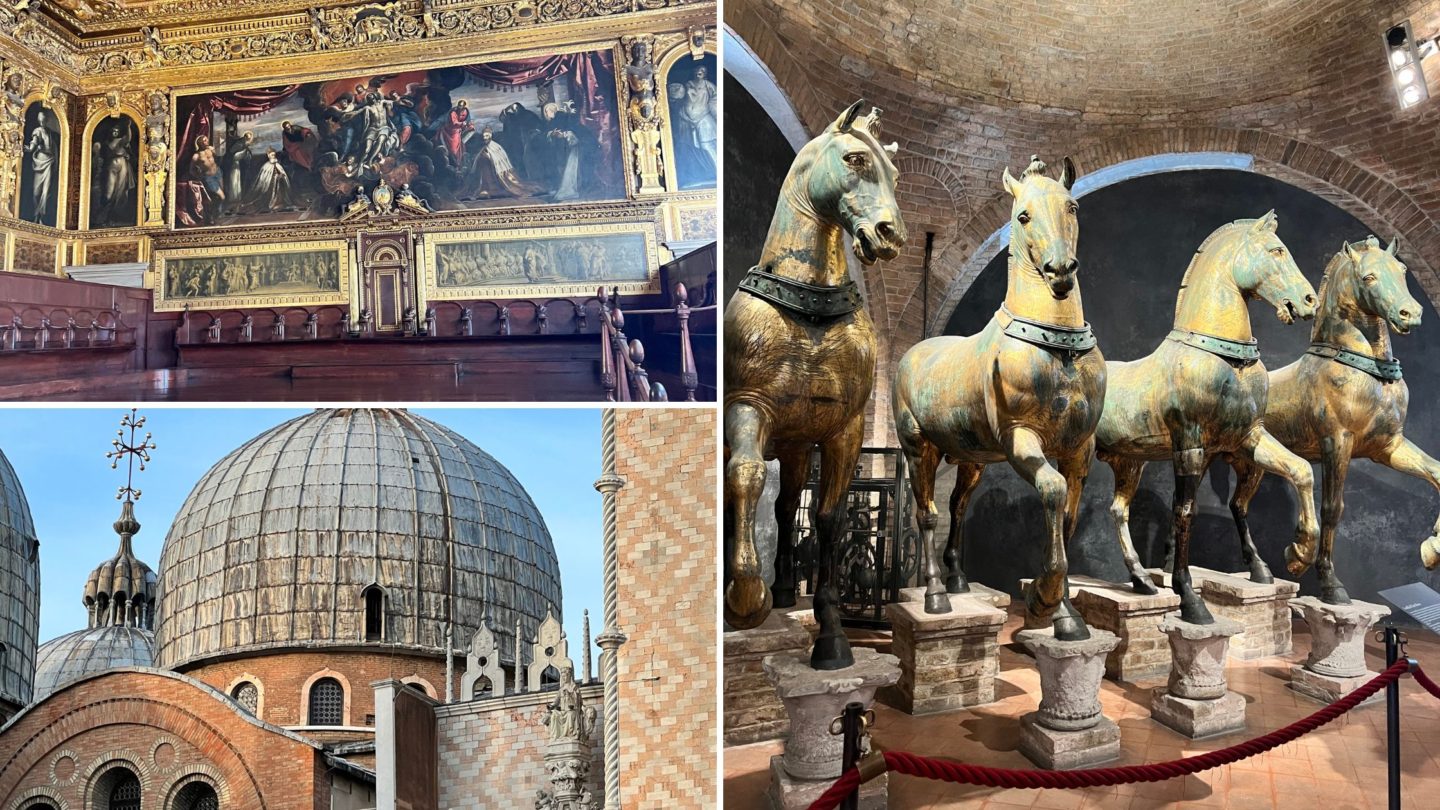
Less than a week before my birthday, I boarded a plane, destination of Venice, with a layover in Amsterdam.
I arrived in Venice in the late afternoon. I had arranged for transportation from the airport to the hotel the cheapest way possible: I took a bus to Piazza Roma, the multi-modal center of Venice. From there, another trip through maritime public transportation to the Ponte Rialto station.
After traveling for about 24 hours, I thought I would be too exhausted to head out and visit the City. My luggage did not arrive from Amsterdam. I expected this, so my carry-on had most of what I needed to survive for a day. The pharmacy next door provided the rest.
I had spent the previous two weeks regularly checking the weather in Venice. The forecast predicted a few days in the mid-sixties with rain for half the time. When I arrived, it was in the high sixties, warm and sunny.
When the bellman informed me that St. Mark’s Piazza was right around the corner through some narrow alleys and a bridge over an interior canal, I could not wait until the next day to start my visit. Plus, I needed to eat.
And so, I went out and had my first taste of Venice. I walked around the St. Mark Piazza, headed towards the water, and breathed in the sights. My first thought was there were so many people, so many modern-day invaders. I felt empathy for those who call Venice home. The City’s population has dwindled from over 120,000 in its heydays to 55,000 inhabitants.
Venice receives one million visitors a year. Imagine sharing your space with over one million strangers, sharing space on public transport, and bumping into so many walking, still, and revolving bodies while navigating your way to work, grocery stores, and home. These first moments in Venice reinforced the themes of being courteous, respectful, and gracious when enjoying someone else’s hospitality.
The following day, I returned to St Mark’s Square to meet my tour guide for a narrated Doge Palace and St Mark’s Basilica visit. I love learning about a place’s history and culture. At the Doges Palace, I learned of the modern political governance of Venice by the 120 or so families that constituted the City’s nobility. Unlike other places in Europe, Venice’s nobility consisted of merchants who had become extremely wealthy, thanks to the City’s location and its float that afforded it a monopoly on spices, silk, and other prized products in Europe.
As a result, Venetians had mastered the art of shipbuilding and cemented their dominance of commercial trade in ports on the Mediterranean and Adriatic seas. The Doge, the ruler of Venice, elected for life to rule the City, was never in absolute charge of the Venetian state. He did so with three other groups of wise men and a Senate that decided on laws and policies for the merchant state. He was elected among the ruling families of Venice in a style reminiscent of the election of the Pope.

Another distinctive mark of the Venetian state is that it remained independent of the Pope, and the Venetians were the ones who named the Archbishop of St. Marks. At the same time, this privilege belonged to the Pope everywhere else in Europe. As a result, to this day, St. Mark Basilica is a Christian Church and not necessarily a Catholic siege. I found this will to remain in control of your destiny within your borders very appealing. This streak of independence is one of the things I admired upon learning of the history of Venice. Of course, money and power afford you this type of power and level of independence.
As they say, genius lasts for a century. Eventually, Venice started declining, and Napoleon brought the coup de grace upon the state. To this day, Venetians speak with contempt about Napoleon. This fact caused me to pause and bring up the following thought: You never know what you may have in common with people. I can empathize with their disdain for Napoleon.
Eventually, I get exhausted by the same stories of war, conquest, power, invasion, and ensuing massacres that are the main characteristics of European and human history through the centuries. Conquest Wars are expensive and not a sustainable way to maintain power.
So I head to walking tours, visit natural parks, city neighborhoods, farmers’ markets, and mainly the famous restaurants. And Venice and its environs teemed with those. On a visit to Venice, do not miss a visit to the fish market, the Jewish Ghetto, and the wonderful green space that luxuriously extends on the city’s east side.

I brought back salt infused with wine, truffles, basil, calamari ink, and other souvenirs. I thoroughly enjoyed exploring Padua, Trieste, Murano, and other nearby cities on foot. I covered many miles during my travels. That was much needed, considering how much pasta and sweets I consumed.
Therefore, modern-day tourism is probably a more peaceful way of bringing revenues to the state. The one million annual visitors that flood the City may help prolong the history and illustrations of the genie of those who built such a beautiful city, a symbol of humankind’s ingenuity. I hope this ingenuity can help keep Venice vibrant and healthy for years to come for the enjoyment of future generations.

Well done Régine. I do Enjoy ready your posts
Author
Thank you, Maryse for your kind and encouraging words.